20+ Best Places To Live In Europe For Expats & Nomads
Are you planning to move to Europe? Where are the best places to live in Europe for expats and digital nomads?
In this guide, several expats share their experiences and tips for newcomers.
You’ll find useful information about each city, including the cost of living, transportation, weather, and other tips.
Read on for a comprehensive list of the best cities to live in Europe.
Copenhagen, Denmark
Copenhagen is one of my favorite places to live in Europe.
The city is beautiful, with colorful old houses, historical buildings, and rich culture. It’s also famous for its canals, bicycle scene, and robust economy.
Copenhagen has often been ranked as one of the happiest cities in the world thanks to its shorter workdays, free college tuition, and relaxing lifestyle. This ever-evolving Nordic city has a large number of expats and is a hub for startups.
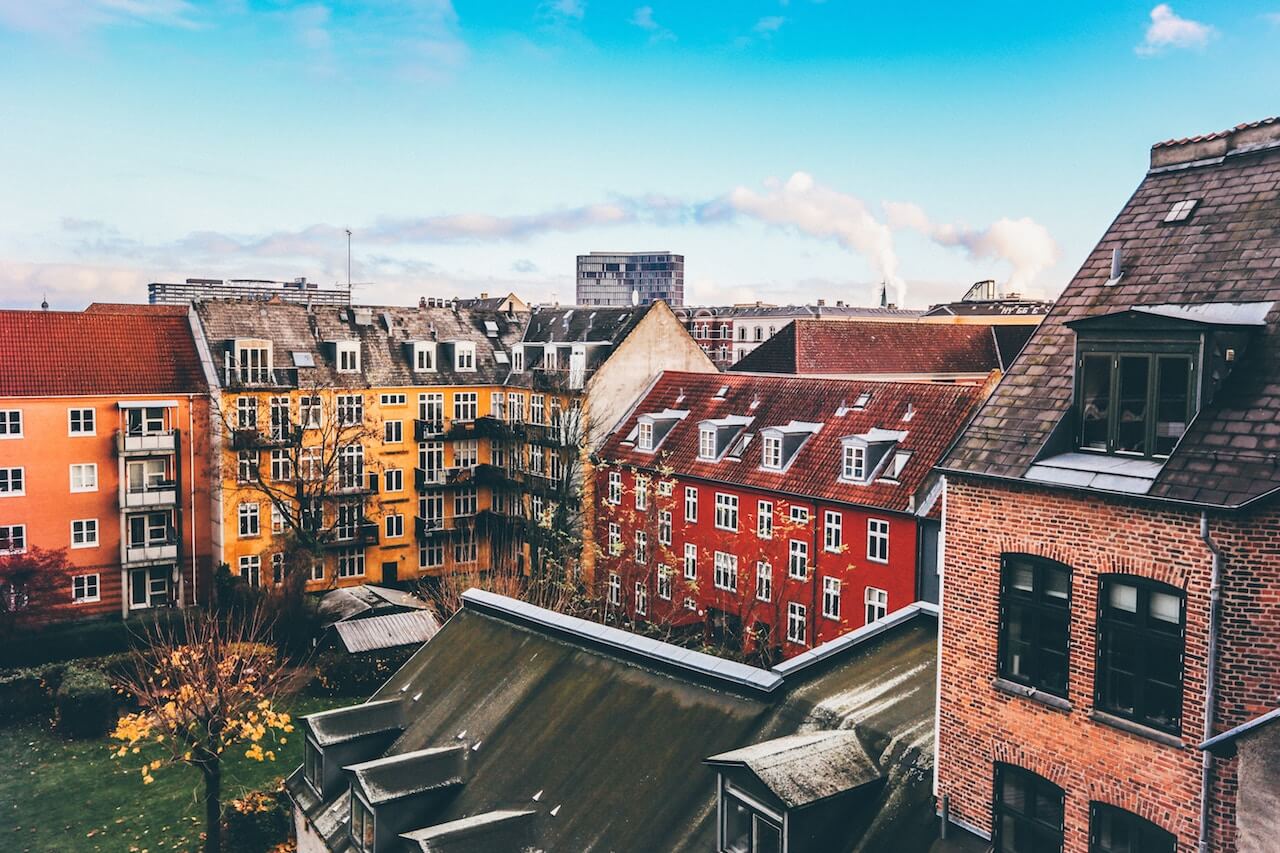
I also love its location. Given that Denmark is in Northern Europe, cities like London, Amsterdam, Brussels, and Hamburg are conveniently positioned nearby.
The trip to the airport from Copenhagen city center only takes around 20 minutes. After a quick check-in, you’re good to go. Flying will take you between one and three hours to reach other European nations.
Read more:
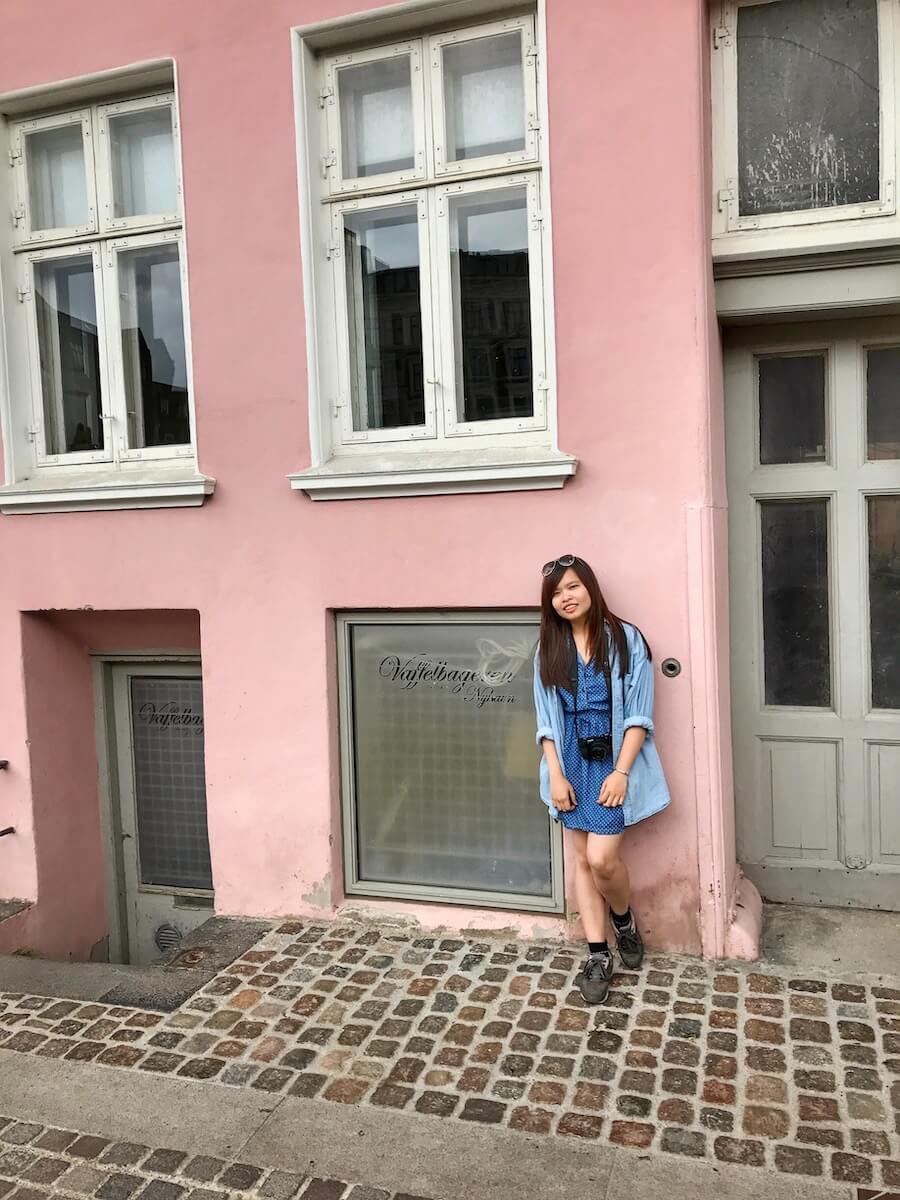
Tips
- Moving tips: Relocating abroad? Try Sirelo for free quotes from top international movers that fit your budget. Learn more here.
- Money transfer: I use Wise for my international transfers. Quick, secure, and their fees? Way lower than most banks I’ve tried!
- Expat insurance: Life abroad has its surprises; make sure you’re covered with expat insurance.
Porto, Portugal
Porto is a beautiful city in Portugal that draws both tourists and expats to its shores.
It is an ideal destination for expats due to its pleasant climate and vibrant culture.
Areas like Matosinhos, Porto’s beachside district, and Boa Vista are known for their low crime rates and desirable locations close to the city center.
The weather in Porto is usually warm and sunny, although the winter months can be pretty cold.

The cost of living in Porto
The cost of living here is relatively low compared to other European cities, with an average one-bedroom flat costing around $600 per month.
If you’re looking for something larger, you can find two- or three-bedroom flats from $850 and up.
Eating out in Porto is also quite affordable – you can get a decent meal for between $10-15, while grocery shopping will cost around the same amount depending on what type of food you buy.
Transport costs are also relatively cheap – public transport such as buses and trams is around $1.60 per ride, or you can buy a monthly pass for $30.
Tips for living in Porto

Living in Porto as an expat is a unique experience that offers plenty of opportunities for exploration and cultural exchange.
Here are some tips to make your stay even better:
- Learn Portuguese – It’ll help you settle into the city faster, plus it will be useful for ordering food and getting around.
- Join a social club – There are plenty of expat-friendly clubs in Porto, so join one to meet locals and other foreigners alike.
- Explore the city – There are so many great things to do in Porto. Most tourists use 3 days in Porto to discover all the highlights. Of course, as expat you have more time to visit all of Porto’s famous monuments and attractions.
All in all, living in Porto is a wonderful experience that will leave you with plenty of memories and stories to tell.
With its affordable cost of living, relaxed atmosphere, and rich culture, Porto is the perfect destination for expats. Don’t wait – come experience it for yourself!
Recommended by Alexander from Travel your memories.
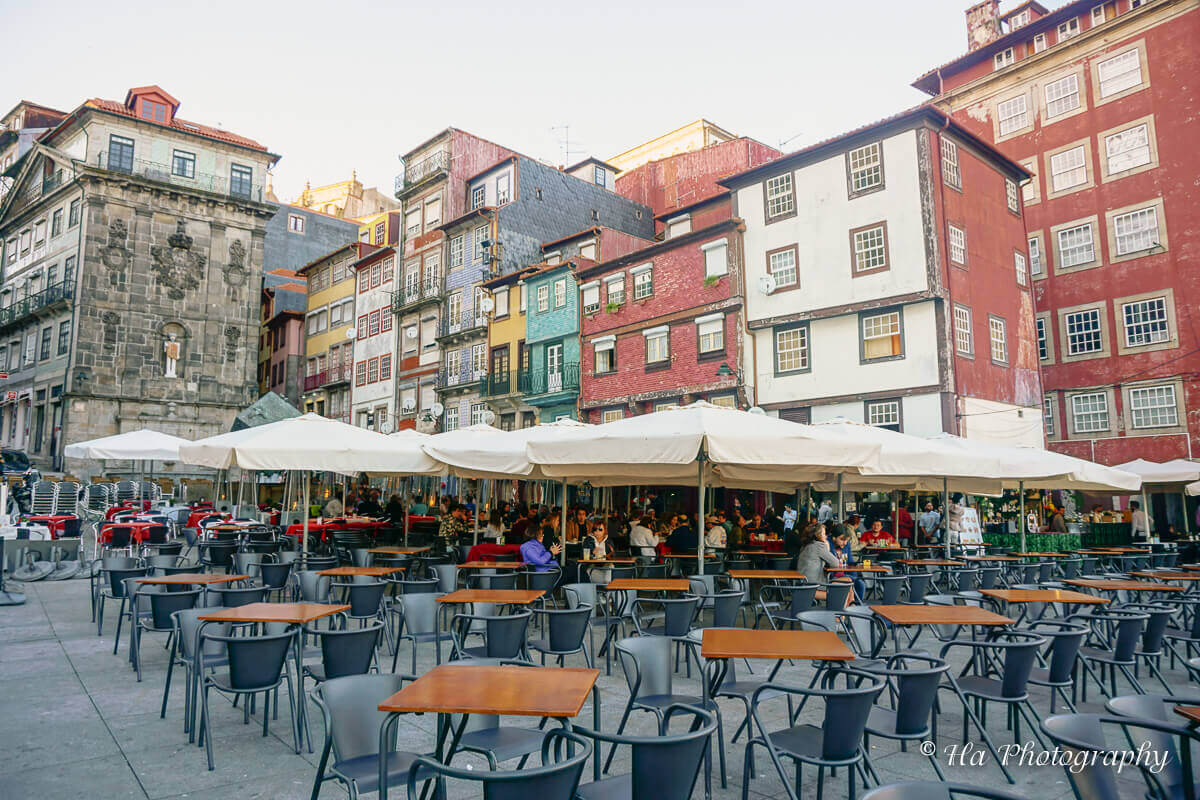
London, England
The capital of England is one of the most multicultural cities in Europe, with one-third of residents born abroad.
The city population speaks more than 250 languages, so London makes it simple to adapt to the new environment for any expat.
Such diversity allows for exploring various cultures and meeting new people from all over the world.
Expats will love tasting different cuisines, visiting famous landmarks, and finding some of the best hidden gems in the UK.
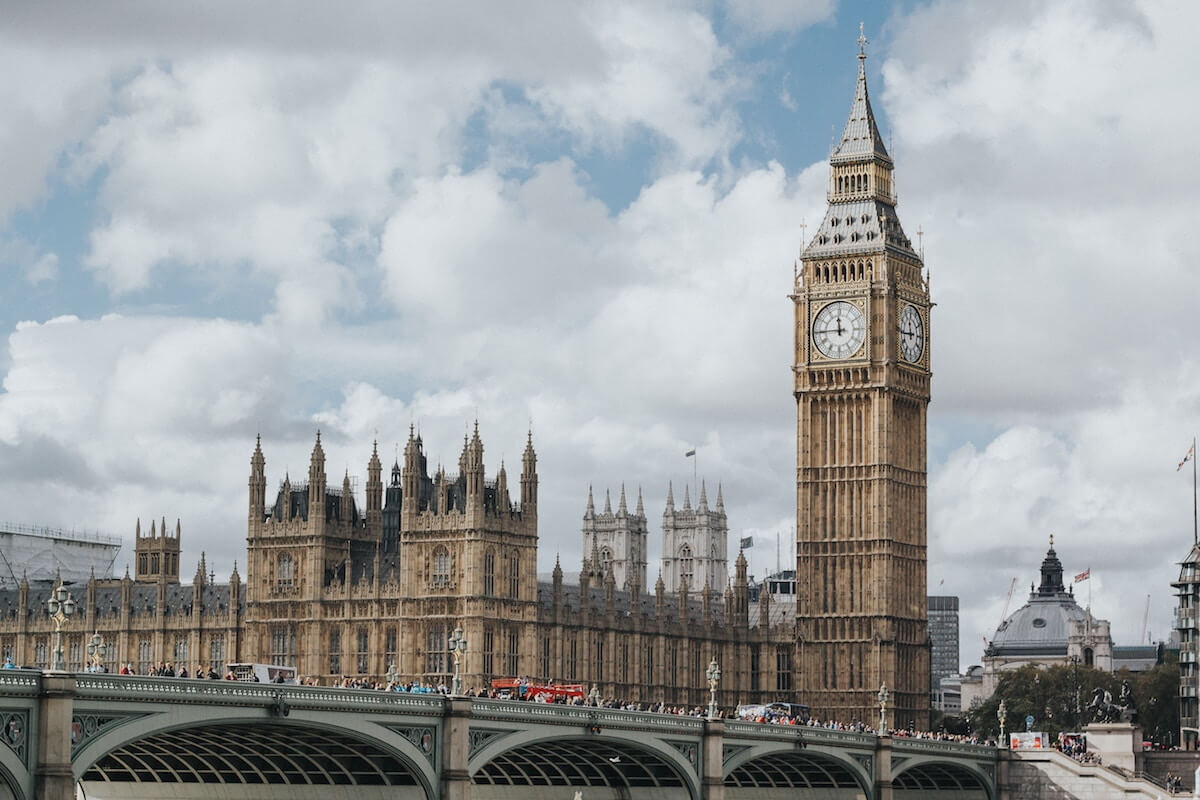
The cost of living in London
Meals in an inexpensive restaurant in London cost around £15. If you decide to cook meals at home, make yourself ready for an expense of around £30 per week.
However, the most expensive is renting an apartment in the heart of London. In fact, Zone 1 and 2 are great areas to live in if you want to fully experience this beautiful city.
The cost of renting a 1-bedroom flat close to the city center is around £1700. If you want to save some money, consider flat-sharing or moving outside zone 1 and 2.
The city is well connected with many surrounding areas so getting to any part of London should not be a problem.
To reduce the costs of commuting, buy an annual travel pass.
Depending on the zones you would be traveling to, you may pay £1480 for a 1-year travel card (Zone 1 and 2) or £2708 (Zone 1-6).
You can use a travel card pass for the London underground, local buses, and many other transport links.

Weather & things to do
The weather in southern England is much nicer than in most parts of the UK.
During summer, you can expect nice sunny days with an average temperature above 20°C. However, there are also a lot of rainy days in London throughout the year.
Such weather is compensated by easy access to multiple airports in London.
A weekend break to many other places in Europe from London can be affordable due to many cheap international flights. So, if you will ever miss the sun, book a flight to Spain, Portugal, or Italy to recharge your batteries.
Recommended by Paulina from the UK Every Day.
Barcelona, Spain
Moving to Barcelona is truly a fantastic experience that no one will soon forget.
With a vibrant expat community, Mediterranean flair all year round, unparalleled cuisine, dozens of hours of sunshine (even in winter), incredible architecture, and exciting culture, no one will get bored here anytime soon.
The Catalan capital offers something for everyone and won’t let anyone leave so quickly.

The cost of living in Barcelona
Even though Barcelona is rather expensive compared to many other Spanish cities, Spain generally compares favorably to other European metropolises.
For example, the average expat pays between €950 and €1,500 per month, with rents probably the most expensive at around €800.
Therefore, many that want to stay in Barcelona on a budget choose to live in a shared flat, which limits the average rental expense to about €400-€600.
In Spain, people like to eat out. Especially at lunchtime, you can get a meal with several courses and a drink for as little as €10.
If you want it even cheaper, go shopping in the local supermarkets or markets. Especially fruits and vegetables are much more affordable than in Central Europe.
Transportation & other practical information
Transportation in Barcelona is also comparatively cheap. A car is definitely not necessary, because with the metro you can quickly get almost anywhere in the city.
A 10-ride ticket costs only €11.30, just a little more than €1 per ride.
I love living in Barcelona. Especially the weather is incredible if you come from the north, where winter is long and gray.
In Barcelona, the sun shines almost every day. And that benefits mental health and is also reflected in the culture.
Locals spend much time outside in cafes and the city’s countless terraces. There is always an exuberant atmosphere, which of course, also captivates us expats.
Each neighborhood in Barcelona has its own peculiarities, depending on what you’re looking for personally. Especially popular with expats is the district by the sea, Barceloneta, and the zone in the historic center, Barrio Gòtico.
Recommended by Vicki from Vicki Viaja.
Mykonos, Greece
Imagine sipping a cocktail on the terrace of a Greek bar overlooking the sea after work? Living in Mykonos, in Greece, feels like you’re always on vacation.
This island has it all, from the stunning white and blue architecture to the endless parties or adventures on the beach.
The people of Mykonos are very welcoming, which is very important when moving to a new place.
They want you to have the best possible experience on their island. This ranges from sharing with you the secret beach location to cooking the best moussaka you have ever eaten.
Mykonos allows you to experience island paradise life under the sun while being close to the big city life.
It has an international airport with direct flights to Paris or London and high-speed ferries connecting you to Athens, the Greek capital, in less than 3 hours, door to door!

The cost of living in Mykonos
Most locals live in Mykonos town, which is where you will find all the amenities you need.
You can find a great one-bedroom apartment in the center for about $1200 USD per month. As in most cities, the further you get from the center, the cheaper the accommodation.
An average meal in a restaurant costs around $15 USD, while weekly groceries are around $50 USD.
A ticket for public transport is $2 USD, but you can also rent a motorbike or car for the duration you’re planning on staying on the island.
You are considering Mykonos as your next expat destination, but you’ve never been there? You should first spend around 3 days in Mykonos to discover the island.
Recommended by Soline from On the Road Diary.
Antwerp, Netherland
Are you an ex-pat looking for a great place to live in Europe? Look no further than Antwerp, Belgium!
This vibrant and historic city is becoming increasingly popular with ex-pats from all over the world.
Not only does it offer plenty of culture and entertainment, but its cost of living is relatively low compared to other major cities in Western Europe.
The cost of living in Antwerp
A quick note on the cost of living in Antwerp:
- Average price 1 bedroom flat: €700-800/month.
- Average meal cost: €17-25 for the main course; €35-50 for a 3-course meal.
- transport cost: €2,50 for a single ticket; €49 for a 1-month membership; €351 for a 1-year membership.
Best areas to stay in Antwerp.
There are many safe neighborhoods with affordable rental prices that offer easy access to the rest of the city.
If you’d like to live in trendy neighborhoods such as Het Zuid and Het Eilandje. They tend to be the most expensive regions in the city, but they are very safe and with lots to see and do.
If you’re looking for something more budget-proof, the center is a great place to start your search.

Weather and other tips for living in Antwerp
The weather in Antwerp can be quite unpredictable – you might experience sunny days one week and rain the next; it’s Belgium, after all.
But no matter what the forecast looks like, there are always fun activities going on that make living in Antwerp enjoyable!
Don’t be afraid to explore. Antwerp is full of hidden gems, so don’t hesitate to wander off the beaten path and discover something new.
We can recommend Park ‘t Rivierenhof. Walking through the pedestrian tunnel to St. Anna and enjoying the view of Antwerp from the other river bank is also one of the top things to do in Antwerp.
A great tip for ex-pats is to get yourself a bike as soon as possible. Not only will it help to explore the city, but it’s also what most locals use for commuting.
Public transport in the city is easy, as is the train network to other destinations in Belgium. On top of that, you can get to Amsterdam, Paris, and London in just 1,5-2,5 hours!
Overall, Antwerp is an amazing place to live for ex-pats. It’s a city home to many cultures, and it’s full of history, art, and amazing cuisine.
Recommended by Babs from Next Stop Belgium.

Cork, Ireland
Cork is Ireland’s southernmost city, known as both the Rebel City and the Food Capital of Ireland.
Don’t underestimate this small city’s charisma, pride, and dedication to having a good time. In keeping with its “Rebel City” moniker, there’s a distinct ‘punching up’ energy in Cork that’s evident in everything from the street art to the local oral history.
As an expat, I love Cork’s diverse and interesting population. Ireland has embraced a relatively lenient immigration policy, so you’ll find expats from all around the world when at an event or a night out.
The food scene also reflects Cork’s multinational population, with cuisines from around the world available at local restaurants.
Ireland is known for having lively pubs full of locals, and Cork is no exception.
If you finish your work early, or if you want to meet up with friends, you can head to one of the many pubs in the city.
From Sin é, known for nightly performances from local traditional Irish bands, to the Franciscan Well, a lively spot that more closely resembles a beer garden.

The cost of living in Cork
Below is a basic cost of living in Cork.
- Average monthly living expenses: $2,250.
- The average price for a 1-bedroom flat: $1,300.
- Average meal cost: $12-18.
- Food cost: $250.
- Transport cost: $75 for public transit.
Best areas to live in Cork
In general, Cork is known for being a very safe and secure city.
Housing will be more expensive in central areas, but these spots will also have more options for workspaces, restaurants, and pubs.
I recommend choosing an apartment or hotel within 25 minutes walk from the English Market.
You can save money by choosing a house or apartment outside of the center of Cork, where the average price for a one-bedroom apartment drops to $1,000-1,100.
If you search for average apartment costs in Cork, you’ll likely see average prices that are much lower than what I’ve listed in this post.
Ireland has strict rent control laws, so those overall averages include apartments that are unlikely to go onto the market – so I’ve listed prices closer to what you’d see for new lettings.
Expats thinking of moving to Cork will want to try to secure their accommodation as quickly as possible due to Ireland’s ongoing housing crisis.
Once you arrive, use apps like Meetup.com and BumbleBFF to start to meet locals.
Weather in Cork
The weather in Cork is milder than in Dublin or other areas of the country because of its southern location.
Although Cork has its fair share of cloudy and chilly days, the temperature rarely drops below freezing, and snow is infrequent enough to be a novelty.
Recommended by Amber from Amber Everywhere.
Manchester, England
Manchester is the second-most populated city in England, after London, and is located in the northwest of the country.
Over the past 5 years, the city has expanded, and some areas improved massively, making Manchester a great place to live in the UK.
Manchester is a lively and constantly changing place attracting people from all over Europe and beyond.
For me, living in such an international city is exciting, and that’s what I love about Manchester.
What I like about this city is that everything is within walking distance as I really enjoy walking around cities and finding hidden or new shops and cafés.
I also like that here you can access food from different countries whether you want to have a meal out or cook your own food at home.

The cost of living in Manchester
- Living expenses: $365 per month
- The average price for 1-bedroom flat: $790
- Average meal cost: $30
- Food cost: $30
- Transport cost: $5
Best areas to live in Manchester
The best areas in Manchester are the city center (M1), Salford (M3), Castlefield, Ancoats, Greengate, and 15/20 minutes drive or bus from the city center: Chorlton, West Didsbury, Sale, and Altrincham.
These districts are safe, clean, and at a walkable distance from the city center or, if a bit far from it, well-connected by public transport.
They also have good restaurants and bars, supermarkets and services you might need when moving here.
The rent price is around £650 (excluding bills) for a one-bedroom flat in the city center if not higher.
On the outskirts of Manchester city center, you can find lower rent prices but expect to be living in low-income neighborhoods that may have limited access to main services.
Weather in Manchester
Manchester is quite rainy all year long.
Winters are cold, and temperatures can go below 0 °C sometimes, and during the summer, there are sunny and warm days, but it’s not the rule.
Average temperatures are around 20 °C.
Tips for moving to Manchester
When moving to Manchester, there are a couple of things to sort out before settling in.
I recommend getting a SIM card for your phone as soon as you can since companies won’t contact you if they see a foreign phone number on your CV.
Finding a job and somewhere to live should happen concurrently. That way, your CV shows that you are already living at a UK address.
This will also allow you to open a UK bank account with Neobanks such as Monzo, Revolut, or Starling as soon as you find a place to stay, even if it’s temporary.
When looking for accommodation, check out the websites such as Rightmove, Spareroom, and Zoopla, where you can get in contact with landlords or letting agencies directly.
Recommended by Maddalena from Venice Travel Tips.
Edinburgh, Scotland
The Scottish capital is one of the most unique and beautiful cities in Europe.
There are plenty of historical and cultural attractions in Edinburgh. The city is famous for its stunning medieval architecture, narrow cobbled streets, and a dramatic castle perched over an extinct volcano.
The Old and New Town of Edinburgh is a Unesco World Heritage Site.
As an expat, you are bound to fall in love with Edinburgh.
Although the city is very compact and walkable, it also has excellent public transportation.
So, getting around is very easy and cost-efficient. A single journey ticket for an adult costs 2$, and a weekly unlimited travel card costs 24$.
There are a lot of open green spaces scattered all around the city. You can hike to Holyrood Park, which is close to the city center, or walk along the riverside paths in Dean Village. Also, another great thing about living in the UK is the free healthcare.

The cost of living in Edinburg
The living costs here are considerably cheaper than in other popular cities in the UK.
Estimated monthly living expenses for a single person are about 850$ without rent. Edinburgh is a cultural hub.
You can find many restaurants with Scottish and global cuisines suitable for all budgets. An average meal at a restaurant is around 25$ per person. You might expect to pay around 350-500$ monthly for food and groceries.
Best areas to live in Edinburg
The average rent for a one-bedroom flat is around 850$, depending on your location.
Stockbridge, Bruntsfield, and Polwarth are some of the great neighborhoods to live in. The rent in the city center is comparatively higher.
But if you decide to live outside the city center, the rent will get more reasonable. Overall, Edinburgh is very safe and well-connected.
Weather and other tips for living in Edinburg
Weather-wise, it rains quite frequently in Edinburgh, like the rest of the UK.
Days are short and cold during the winter months. But the summer is pleasantly warm and a great time to enjoy the outdoors.
The Fringe is the international art festival hosted each year in August and is the largest art festival in the world.
To sum it up, living in Edinburgh is certainly a very enriching experience for an expat.
Recommended by Moumita & Sankha from Chasing the Long Road.
Lagos, Portugal
Lagos, a beautiful coastal town in the south of Portugal, is a great place to live as an expat.
In the last couple of years, the city has been gaining popularity, with expats from all over the world choosing it as their temporary residence.
It’s one of the most dynamic and vibrant cities in the Algarve region. There are regular expats and digital nomads’ meetups and events, making it easy to meet people.
There are many amazing things to do in Lagos.
The town boasts many spectacular beaches within walking distance from the center. Some beaches are great for sunbathing, some for surfing, and some for snorkeling.
Surfing is one of the most popular activities in Lagos. There are many surf schools and shops offering lessons and gear rental.

The cost of living in Lagos
- Living expense: 1200$ – 1500$ per person for a comfortable living. It’s possible to live on under 1000$ if renting a room in a shared apartment.
- The average place for a 1-bedroom flat: is between 700$ and 800$.
- The average meal cost: 10$ without drinks in a touristy place, 7$-9$ for a complete menu (Menu do Dia) in a local place.
- Food cost: under 10$ per person per day for grocery shopping
- Transport cost: Lagos is a small place. It’s easy to get around walking or cycling. A bus ride within the city is around 1$.
Best areas to live in Lagos
Lagos is a safe and relatively small place. Choose your accommodation based on your budget.
Places near the beach are more expensive. Many expats prefer to stay near Old Town, which has a very central location close to the beaches and shops.
Transportation and weather
It’s easy to get around in Lagos. Most places can be reached by walking or cycling. There is no need to rent a car or use public transport.
Nice sunny weather is one of the reasons people chose Lagos. It’s warm and sunny most of the year, with occasional rains happening in the winter months.
It’s a perfect place for those who want to escape the cold winter in Northern Europe.
Other tips for living in Lagos
If you’re planning to move to Lagos, it’s better to do so during the low season, which is between November and February, when it’s easier to find an apartment and rental prices are significantly lower.
Recommended by Alya from the Algarve Family.

Utrecht, Netherlands
The city of Utrecht is the fourth-largest city in the Netherlands, with a population of about 360,000 people.
It’s an old and important historical city in the Netherlands, but it’s also safe, modern, and comfortable, making it a great place for expats in Europe.
The cost of living in Utrecht
Utrecht is a student city, and it’s also known for its beautiful canals.
It’s not the cheapest place to live, but it’s manageable.
If you’re single, you can get by on less than 1000€ per month. If you eat out, you can expect to pay about 10€ for lunch.
Weather & Transportation in Utrecht
A train ride from Utrecht to Amsterdam also costs about 10€, which is not bad at all.
One way you can save money is by using a bicycle to get around. A lot of people do this, and it’s good enough to get to most places easily.
The weather is usually pretty mild in Utrecht, with summer temperatures of 55 to 72 F (13 to 22 C) and winter temperatures of 32 to 45 F (0 to 7 C).
There’s snow in the winter, but it’s never too much to be a problem.

Things to do and see in Utrecht
There are many good things to see and do in the area around Utrecht, including famous sights like Castle De Haar, which is the biggest and nicest castle in the Netherlands. This ‘Kasteel’ is well worth a half-day trip from Utrecht, with an interior and exterior that are both stunning. You can pay extra to go inside.
There are also plenty of historical buildings in Utrecht to see, including the Dom Tower.
Nice neighborhoods to stay in include Witte Vrouwen, Lombok, and Stadhuiskwartier.
One of the great things about being an expat in Utrecht is the location. It’s centrally located in the Netherlands, and the train station can take you to Amsterdam or the airport in about 30 minutes!
Recommended by David & Intan of The World Travel Guy.
Tenerife, Spain
Tenerife is an excellent option if you’re an expat in Europe looking for somewhere warm to escape the cold winter months.
The cost of living in Tenerife
The cost of living in Tenerife varies depending on the type of accommodation you choose and if you rent a car or not.
I spent about €1500 a month living there, sharing a house, and biking/using public transit.
During my first month, I stayed in a coliving in the north for €800 and then moved to a shared apartment in the South for €600/month.
Buying groceries is affordable, and the islands grow a lot of fresh produce and vegetables thanks to the rich volcanic soil. At the local markets, I got a full bag of produce for €8!
You can get meals as low as a few euros, but you pay for what you get. At a decent restaurant, expect to pay €10-15 for an entree.

What I love about living in Tenerife
There are many reasons to love living in Tenerife.
First, it’s got an established expat/digital nomad community, making it easy to integrate into the community.
The ease of access to the outdoors was why I loved living in Tenerife.
The South is excellent for surfing, while the north has stunning hikes in the mountains. It’s also got an active spiritual community, with many yoga classes and retreats.

One of your biggest decisions will be whether to live in the north or South of Tenerife.
The South has the best beaches and parties, so this is the best place to be if you want an active social life. Popular areas are Los Cristianos, Playa las Americas, and Costa Adeje.
The north offers a quieter experience and is better suited for expats who want to do a lot of hiking and experience authentic Spanish culture.

Weather & Transportation in Tenerife
While just an hour apart, the weather in the South is much warmer than the north in the winter months, around 25 degrees and sunny most days.
You’ll need a jacket in the north at night, and it rains more often.
Having a car will make your experience in Tenerife much more enjoyable as the island is not the easiest to get around on public transport, but it will also add to your expenses.
I rented a car for one week, and it was €200. There are also many car-sharing groups, so you can get by without one. You can check your rental car options here.
Recommended by Lora of Explore with Lora.

Athens, Greece
Athens is a fantastic place to live in Europe as an expat.
Along with great food, vibrant culture, and rich history, the city also is one of the most affordable places to settle in the western world.
The cost of living in Athens
Living expenses in Athens = €900-1100/month
- Average price for a 1-bedroom flat = €350-500/month
- Food Cost = €200-300/month
- Average meal cost = €6-15
- Transportation = €50-100/month
- Bills / Subscriptions = €50-100/month
Best areas to stay in Athens
Choosing the right neighborhoods is essential if you want to live in Athens. Popular areas like Monastiraki, Plaka, Kolonaki, and Psyri are catered to tourists, and the prices reflect that. Some landlords don’t even allow long-term rentals.
If you would like to find an apartment near the city center for a reasonable rate, consider looking in Pagrati or Mets, slightly southeast of the city center. This district is trendy, still connected to Athens via the metro, and relatively safe in the evenings.
The neighborhood of Gazi, just east of the Acropolis, is also an up-and-coming area great for ex-pats.
Weather in Athens
Athens is a very temperate city year-round.
The warmest (and busiest) months are June – August. This is peak tourist season, and temperatures are regularly above 28ºC.
Spring and Fall are the best months to live in Athens, with temperatures between 20-25º and little to no rainfall.
Winter can be rainy and chilly, but it is much more bearable than in other European cities.

Tips for living in Athens
Here are some more tips for living in Athens, Greece.
- Decide if you need private health insurance – Greece has free public healthcare, but many ex-pats choose to get private health insurance to afford private healthcare.
- Learn the Language – It is not essential to know Greek before moving to Greece, but it can definitely help immerse you into the culture and connect with locals more.
- Explore the City – While living as an Expat, it’s easy to put off seeing famous museums and tourist attractions since you have so much time in the city. Don’t wait, because you may need more time later on.
Recommended by Caleb from Pazook Travel Journal.
Paris, France
One of the most popular cities to visit in Europe is Paris!
The French capital is known for its French gastronomy, gorgeous architecture, pleasant summers, and very cold winter!
And while some people deem Paris overrated when they first visit, it’s when you’re actually living in the city that you discover all the wonders of this beautiful city.
For example, one of the things I love most about Paris is that there is never a dull moment. No matter where you are, there is always something or some event happening around the city.
Another thing I love about Paris is that it has such an efficient transportation network.
For a city as large and chaotic as Paris, it’s easy to get overwhelmed. But with so many trains, it’s easy to visit the countryside, escape to places like Monet’s Gardens, or even go to another country for a few hours!

The cost of living in Paris
- Living expense: $3100/month
- Average price for 1-bedroom flat: $1300
- Average meal cost: $23
- Food Cost: $1200/month
- Transport Cost: $89/month
Best areas to live in Paris
So if you’re thinking of moving to Paris, some areas to consider looking for housing include the Latin Quarter and Saint-Germain neighborhood.
The Latin Quarter is known for having a young demographic, lively nightlife, and offering more affordable housing options. And within the Latin Quarter, some of the nearby attractions include the Jardin des Plantes and Panthéon.
Meanwhile, Saint-Germain is known for being a bit more expensive. It’s located closer to the center of Paris and includes famous attractions such as the Musée d’Orsay and Jardin du Luxembourg!
Ultimately, it’s no surprise that Paris attracts expats from all over the world!
So, if you’re thinking of moving to the city, my one piece of advice is to always explore a new place at least once a week. Paris is filled with places, secrets, and foods waiting to be discovered!
Recommended by Kristin of Global Travel Escapades.

Madrid, Spain
Madrid is the capital and largest city of Spain, located in the center of the country.
It is known for its rich history, vibrant culture, and lively atmosphere.
As an expat living in Madrid, there are many things to love about this vibrant city.
One of the things I love most about living in Madrid as an expat is a diverse culture and lively atmosphere.
The city is filled with beautiful parks, historic landmarks, and world-class museums, making it a great place to explore and learn. The nightlife in Madrid is also noteworthy, with a wide variety of bars, clubs, and restaurants to choose from.

The cost of living in Madrid
- Living expenses: 2000 $
- The average price for a 1-bedroom flat is 700 $
- Average meal cost: 7 $
- Food cost: 300 $
- Transport cost: 40$
Best areas to live in Madrid
When it comes to finding a good place to live in Madrid, there are a few areas that stand out.
Chamberí and La Latina neighborhoods are considered some of the city’s safest and most desirable places to live.
These areas tend to be more expensive than other parts of Madrid, but they offer a higher quality of life with their narrow, tree-lined streets, selection of cafes and restaurants, and proximity to the city center.

Weather in Madrid
The weather in Madrid is usually pleasant, with hot summers and mild winters.
The city is located at a high altitude, so the summers can be quite dry, with temperatures reaching the mid-30s Celsius (mid-90s Fahrenheit).
In the winter, temperatures are usually in the low-to-mid 20s Celsius (70s Fahrenheit), with occasional cold spells.
Tips for living in Madrid
For those considering living in Madrid as an expat, here are a few tips to make the transition a bit easier:
Learn some basic Spanish: While many people in Madrid speak English, it is always helpful to learn some basic phrases and words in Spanish. This will make it easier to navigate the city and interact with locals.
Get to know the city: Madrid is a city with a rich history and culture, so take the time to explore and get to know the city. Visit landmarks like the Royal Palace and the Prado Museum, and try some of the local cuisines.
Make friends: One of the best ways to enjoy living in Madrid is by making local friends. Join a club or group, or simply strike up conversations with your neighbors. This will help you feel more connected to the city and make the transition to living in Madrid a bit easier.
Recommended by Victoria from Guide Your Travel.
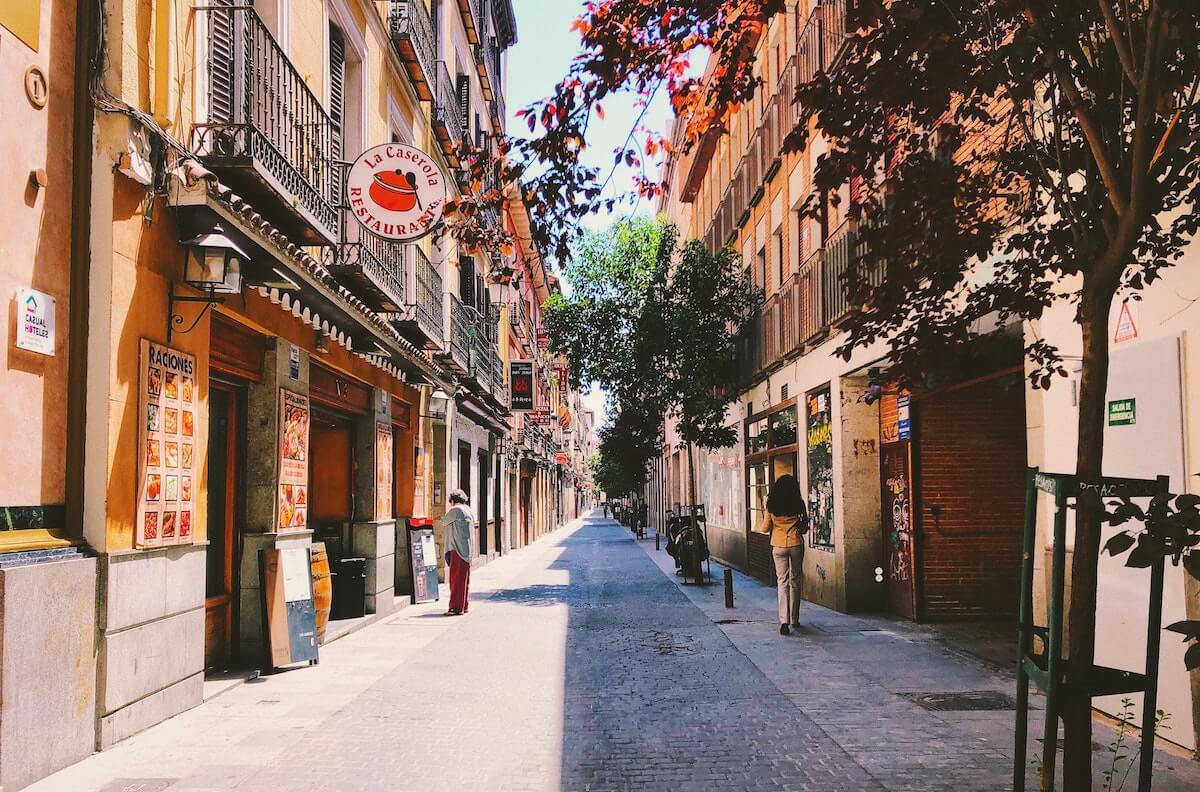
Palermo, Italy
Palermo, located on the Italian island of Sicily, is home to perfect year-round warm weather, stunning architecture, beaches, and delicious food – plus, it has some of the lowest costs in Italy!
Palermo is a stunning city, compact enough to walk around yet full of places to keep you entertained.
Equally, as an expat I love that there are also many breathtakingly beautiful towns to visit nearby on weekends, from Monreale to Cefalu, Sciacca, and San Vito Lo Capo, to name a few.
What I love about Palermo
I was really drawn to Palermo’s unique history and impressive architecture: it is really different from the rest of Italy as it was the most conquered city in the world, so you are constantly learning about the place, appreciating new details, and never getting bored!
It’s also great how you have the hustle and bustle of the city, yet the beach is just 20 minutes away. Mondello is Palermo’s local beach and is so stunning!
In addition, public transport is good in Palermo.
I feel safe here. It’s affordable, the nightlife is really lively, plus the food markets are amazing! Palermo has many unique street foods you definitely need to try!
Plus – Sicily has the warmest weather in Italy: it is pretty much summer all year round here (even when it’s cold and snowing in the north of Italy in winter!), so this is another reason why I love living in Palermo!
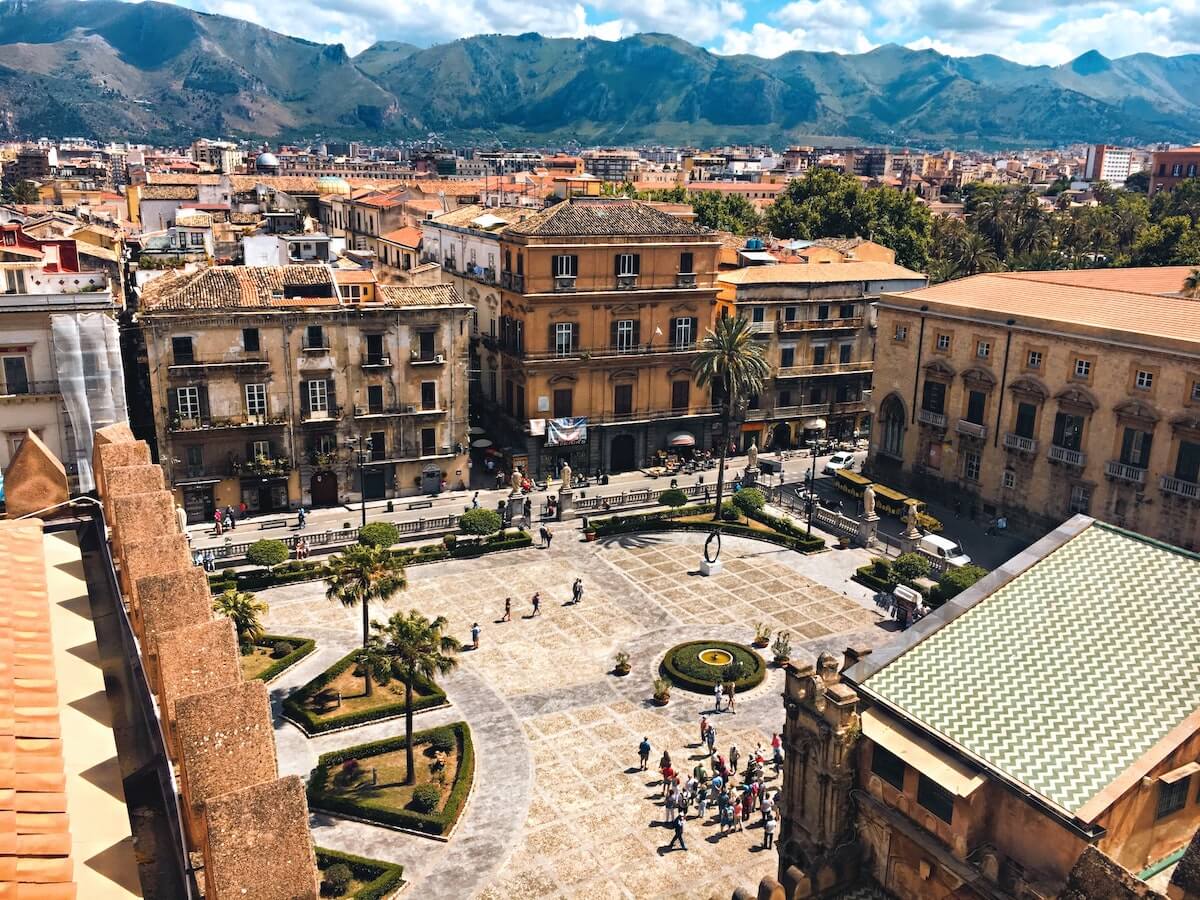
Best areas to live in Palermo
The neighborhoods of De Gasperi, Villabianca, and Croce Rossa are all great areas to live in – in terms of location, safety, and relative price.
Palermo is a really fantastic place to live, and there is a small expat community here, although my biggest tip is to mix with the locals!
English isn’t spoken by everyone in Palermo, so by mixing with the locals, you really get to improve your Italian and get immersed in the Sicilian culture.
I became fluent in Italian within 8 months of living in Palermo, although you can still (just about) get by in English if you don’t learn Italian – the locals are so friendly and helpful!
The cost of living in Palermo, Sicily
Here is the cost of living in Palermo, Italy.
- Living expenses: $800.
- The average price for a 1 bedroom flat is $500 monthly rent.
- The average meal costs $11.
- Food costs $150.
- Transport costs $40 monthly pass or $1.60 for a single ticket.
Recommended by Catrina from 24 Hours Layover.
Cardiff, Wales
Europe has many amazing places that welcome Expats from around the world.
But if you are looking for somewhere full of history, has the friendliest locals and plenty to do, you should consider the capital city of Wales, Cardiff.
Cardiff is an amazing city that offers a fantastic range of leisure and entertainment for residents; whether you’re looking for the perfect night out or just a relaxing day exploring the city’s historic sites, Cardiff has it all.
With its impressive shopping district, beautiful coastline, and fascinating culture, it’s no wonder Cardiff is one of the most popular places to call home in Wales. There really is something for everyone!
The city also has an excellent transport network so you can reach other areas of the UK quickly. So if you want to spend the weekend exploring different parts of Wales or the stunning coastal towns in England like Cornwall, you can easily get there.

The average cost of living in Cardiff
- Living expenses per month-£866/$1056.
- The average price for a 1 bedroom flat in the city center is £779.00/ $950.53.
- Average meal cost- £9.00/ $10.98.
- Weekly Food cost-£25/$30.50.
- Transport cost for a monthly pass- £53/$64.67.
Best areas to live in Cardiff
There are plenty of great areas to live in Cardiff for all wants and needs.
But like most cities in Europe, if you want to save a bit of money, it’s best to live in an area outside the city center.
Here are some of the top areas you should consider living in Cardiff:
- Pontcanna and Canton – 2 miles from the center of Cardiff and great if your job is located there or you need good transport links.
- Penylan- is a short drive from the city center and the perfect area for families.
- Cardiff Bay- A popular area for couples or solo expats who want great views.
- Splot- One of Cardiff’s more budget-friendly neighborhoods and popular with students.
Weather In Cardiff
Unfortunately, the weather in Wales can be unpredictable, and Cardiff is no different.
The average temperatures year-round are fairly mild, but you will get some tropical and snowy days too.
But don’t let you put this off moving to Cardiff, the weather doesn’t stop much here. Just make sure you get a really good waterproof coat with you.
Tips for living in Cardiff
- Cardiff is a fantastic place to live and is incredibly welcoming. To make the most of living here, here are a few tips to help you:
- Matchday can get really busy, especially when Wales is playing, so try to avoid getting the train on these days
- Learning Welsh is a great way to meet other people, but it is not spoken that much in this region of Wales
- Always take a coat with you when you leave the house
- There are plenty of great places to eat around the city but for the best and budget-friendly options, stop by chip alley.
Recommended by Lowri from Many Other Roads.
Krakow, Poland
Krakow is a vibrant, historical city in the south of Poland and offers a fantastic experience to expats.
It has a relatively low cost of living compared to other large cities (although the prices have gone up during the past year).
What I like most about the city is that it’s made for walking/biking, especially the old city center is such a gem!
It is not a large city, but it has everything to offer. You can easily get by without a car; the trams and bus network are very extensive. If you have a car, everything is within 30 minutes drive.
There’s never a shortage of things to do – amazing concerts, parties with all kinds of music, a real castle (Krakow is one of the prettiest medieval cities in Europe), restaurants of every kind, a river walk, and what not!
Plus, it has lots of fellow expats from different countries (check out the Krakow Expats Facebook group), so you can always find someone to catch up with over a coffee or join a networking event.

The cost of living in Krakow
- Living expense is $2300 (10,000 PLN) per person for a very comfortable life.
- The average price for a 1-bedroom flat is $570 (2,500 PLN), including utilities.
- Average meal cost: $22 (100 PLN) per person for a 2-course meal and a drink
- Food cost: $340 (1,500 PLN)
- Transport cost: monthly ticket costs $18.23 (80 PLN) for 1 line or $33.7 (148 PLN) for all lines. If you are a permanent resident and have a Karta Krakowska, the prices are lower: $12.3 (54 PLN) for 1 line and $18.23 (80 PLN) for all lines.
Best areas to live in Krakow
If you’d like to live close to all the attractions and city buzz, the best areas are Stare Podgorze, Zablocie, and Kazimierz.
These areas are especially good if you don’t speak any Polish and will rely on English only. They are safe, and literally, everything is right outside your door.
Krowodrza is another fantastic neighborhood; it’s a little quieter but also very close to the center (within walking distance). It is calmer than the old town, safe, and has lots of restaurants, gyms, and transport stops.
Other areas of Krakow also have their pros and cons, but the majority of the expats prefer to stick to the center because it’s the most international.
Tips for living in Krakow
If you are planning on living in Krakow, here are a few tips that might help you.
If you’re looking for an apartment, join the Facebook groups (search using keywords like “Krakow Wynajem”). There are lots of them, and these groups are a good source of flats advertised by the owners.
If you are on a tight budget and looking for a cheap meal, go to the “Bar Mlechny”. These are Polish food eateries that serve hot food for low prices.
If you plan to stay in Krakow over the winter – invest in a good air purifier. Unfortunately, the air quality in Krakow is very poor during the heating season.
Recommended by Leslie from Backpackers Thailand.

Split, Croatia
Split is one of the liveliest and most enjoyable cities in Croatia, with an incredibly rich history and great connections to the surrounding islands.
No wonder Split has many digital nomads and expats that make this city their home.
With its warm Mediterranean climate, beautiful beaches, historic architecture, vibrant nightlife, great outdoor spaces, and delicious cuisine, there are plenty of reasons to move to Split!

The cost of living in Split is fairly low.
With an average living expense of about $1,000 and a 1-bedroom flat costing about $400 per month, you can enjoy all that Split has to offer without breaking the bank.
The average meal cost per person will be around $10-$15, and groceries costs will be lower.
Public transportation is affordable and convenient, with tickets costing just a few dollars per ride.
Split Old Town, with its cobblestone streets, bustling squares, and gorgeous waterfront, is fantastic to explore but might not be the best area to base yourself on.
Bacvice, Poljud, and Varos are much better for digital nomads and expats looking to find their own space away from the hustle and bustle of the city center at much friendlier prices.
Split has a wonderful climate all year round. In the summer, temperatures tend to hover around 80 degrees Fahrenheit, while in winter, they rarely drop below 40 degrees, so you can still enjoy sunny days even in the cooler months.

Tips for living in Split
If you’re planning on moving to Split, research the best digital nomad or expat communities before making the move, as you might be able to find accommodation through online forums and groups. Plus you’ll find like-minded people to hang out with.
But don’t forget to get to know the locals – they are friendly and welcoming, so don’t be afraid to strike up a conversation!
Most locals speak at least some English, but they love it when foreigners try to speak Croatian, so make sure to learn a few Croatian phrases.
With its low cost of living, great climate, lovely nature, and lots of digital nomad communities, Split is the perfect place for digital nomads and expats alike.
Recommended by Zi from Craving Adventure.
Fuengirola, Spain
Fuengirola is one of the most vibrant towns in Costa del Sol and very popular among expats, especially those from northern Europe who are looking for sun and a cheaper cost of living.
Only a 45-minute train ride from Malaga, Fuengirola has it all. Splendid beaches, a busy nightlife, warm winter weather, proximity to mountains and hiking trails, and the ski slopes in the Sierra Nevada in the winter.
There is a wonderful expat community in Fuengirola where you can meet other expats and get support.
Best areas to live in Fuengirola
My favorite area in Fuengirola is Los Boliches for its charming squares and narrow streets. Cute little cafes and restaurants are found everywhere.
It is also a short walk to the beach and has its own train station where you can either reach Malaga or the next and last stop in Fuengirola center, close to bars, restaurants, nightclubs, and more beaches.
If you are looking for cheaper options, you can look for a place to stay in Las Lagunas, which borders Fuengirola inland and is only about 20 minutes to walk to the beach.
Another option is Torreblanca or Carvajal, which borders Benalmadena. Though the two latter areas are close to the beach, you have a long way into the center of Fuengirola – which is also a reason for rentals being cheaper.
If rental prices are not an issue, it is nice to live in the center of Fuengirola, where you have all the action right at your doorstep.

The cost of living in Fuengirola
Below you can find a quick note for the cost of living in Fuengirola
- Living expenses: $1400.
- The average price for a 1-bedroom flat is $650.
- An average meal costs $30.
- Food costs per month: $300.
- Transport cost: $1.80 for a train ticket within Fuengirola
Weather in Fuengirola
One of the most amazing things about living in Fuengirola is the weather.
Mild winters mean you can easily have days of sun and 20 degrees Celsius.
The average daytime temperature is 17-18 degrees. In the summer, it does not get as hot as other cities in Andalucia, with an average of around 30 degrees Celsius in the daytime.
Contributed by Linn Haglund of Amused by Andalucia.
Ericeira, Portugal
Are you looking for one of the BEST expat cities in Europe to call home one day?
Ericeira, located just 45 minutes from downtown Lisbon and 35 minutes from Lisbon International Airport, might be just what you’re looking for.
This former fishing village is now the coolest Portugal beach town that’s a digital nomad haven.
When we were moving to Portugal, we were drawn to Ericeira because of the lifestyle it offers.
The weather and stunning coastal views are matched by Europe’s best beaches and over 100 restaurants set in a charming, white-washed village with a population of only 10,000 residents.

The cost of living in Ericeira
Whether you are a vegan or love traditional Portuguese, there are so many delicious options from which to choose.
Best of all, the prices are affordable. Lunch at restaurants that offer every type of cuisine is $7-12, and dinner from $10-25.
If you prefer to cook and use fresh ingredients, your grocery budget will run you $200-300 per month.
What’s more, Ericeira is considered one of Portugal’s safest and most affordable towns. A one-bedroom apartment is approximately $800-1,100 per month to live alone and as low as $400-600 if you want a roommate.
Best areas to live in Ericeira
There are plenty of areas to live in that are within walking distance to town from Ericeira Sul to Ericeira Norte.
A lot of people love living in charming Santo Isidoro, just a bike ride away from town and close to one of the best beaches, Ribeira d’Ilhas.
Transportation in Ericeira
Many people live in Ericeira without a car since everything is reachable by walking or bike riding.
We chose to get a car so we could take advantage of touring around Portugal and spending time in Cascais and Lisbon nearby.
Those places can also be reached by a $35 Uber ride if you don’t want a car.
The downsides to having a car are high gas prices, tolls if you use the toll roads, and parking can be difficult in summer without a designated spot. That said, insurance is about half the cost of the U.S.
Weather in Ericeira
You can expect plenty of sunny days year round with temperatures that are at least 10 degrees cooler than Lisbon in the summer.
Cool off even further on one of the 13 stunningly beautiful beaches where you can relax or play beach volleyball with other expats or locals.
Surfing is probably the biggest draw to the area. Ericeira is Europe’s only designated surf reserve with excellent waves that are enjoyed by locals and visitors alike!
In winter, there can be rainy days, but they are punctuated by regular beautiful sunny days in between. Best of all, the comfortable temperatures never really drop below 50˚F or go above 85˚F.
Ericeira, Portugal, provides all the perfect ingredients to make living easy and enjoyable.
With this kind of stimulating coastal lifestyle accompanied by a much lower cost of living than Lisbon—Ericeira could be your next go-to adventure-filled paradise!
Recommended by Jenifer from The Evolista.

Belgrade, Serbia
The capital city of Serbia, Belgrade, is often overlooked compared to some other big cities in the Balkans for expats and digital nomads.
With relatively low-cost living and a laidback lifestyle, Belgrade is a hidden gem to live in Europe as an expat.
The cost of living in Belgrade
On average, you can find a nice 1-bedroom flat in Belgrade for around $500.
Despite not being in the EU zone, most Serbian landlords prefer charging their tenants in Euro.
Compared to the capital cities in the neighboring countries like Zagreb or Budapest, Belgrade offers the lowest living cost in the region, where you can comfortably live in the city as an expat for under $1,000 per month.
You can expect to pay no more than $15 or $20 per pax for a dine-in at some inexpensive restaurant.
Coffee culture is strong in Belgrade; you can easily find a pleasant coffee shop that serves nice cappuccino for as low as $2.
If you prefer cooking your own food, head to the nearest Lidl for affordable groceries, where you can get most staples for a lower price than other supermarkets!

Transportation in Belgrade
The only downside of living in Belgrade is that Belgrade only relies on the bus and tram to get around the city since they don’t have a metro line in their transportation system.
However, their public transportation system is well-connected, and you can go to almost all Belgrade areas by bus or tram.
Get a Busplus card to get around; on average, you will spend around $1-$2 per bus trip in Belgrade.
One thing to highlight about taking public transportation as an expat is to always be cautious since bag snatching and pickpocketing in public transportation in Belgrade are quite common, and foreigners and expats often become easy targets for those thieves.
Best areas to live in Belgrade
Vracar is one of the best areas to live in Belgrade since it’s located not too far from the city center, but it’s also close to some embassy and consulate offices that may come in handy if you’re an expat in Serbia.
If you prefer living on the outskirt of the city, Zemun can be an alternative area to live. A quaint Bohemian area outside Belgrade city center, Zemun also offers many picturesque spots in your surroundings.
Weather in Belgrade
Weather is one of the best things you can get when you live in Belgrade.
The average temperature in Belgrade in the summer is around 24° to 26°C, which is pleasant as it’s not too hot.
In the winter, expect around -2° to -4°C at the lowest temperature, but the good news is that when it snows, Belgrade has so many public parks where you can go to build a snowman or enjoy the snowy white view while it lasts.
Recommended by Marya Sutimi from The BeauTraveler.
Tbilisi, Georgia
Tbilisi was a city I kept hearing about. There were so many stories of travelers that went for weeks but stayed for years. After my first month there, I understood why.
For one thing, it’s a beautiful and historic city divided by the Mtkvari River.
Architecturally it’s a fascinating mix of ancient and crumbling to Soviet, baroque, and modernist styles. You never know what will be around the next corner in this hilly but walkable city.
Thanks to its Soviet past, there’s an abundance of beautiful performance venues and world-class symphonies, ballet, opera, art, and theatre, all at extremely affordable prices.
I heard the Tbilisi Symphony Orchestra for an astounding $10, and my seat was just behind the orchestra.

The cost of living in Tbilisi
With the average Georgian earning less than $800/month, the cost of living is low.
A furnished one-bedroom apartment can be rented for $300/month in an older neighborhood like Avlabari (where I lived), while a more modern flat can be rented in upscale areas like Vera or Vake for $600/month.
Marjanishvili/Chugureti and Rustaveli are also excellent central neighborhoods to stay in.
Groceries, restaurant meals, and wine are all reasonably priced. It’s possible to have a restaurant meal for $5 or $50, depending on where you eat.
The same goes for groceries and wine. Local produce, cheese, bread, wine, and groceries are very cheap.
A metro ride is $0.40, and a local SIM is about $6/month, depending on the data package.
Practical information about living in Tbilisi
Other parts of Georgia are well connected to Tbilisi.
It’s easy to take short trips by train, private car, or local marshrutka (shared mini-bus/van). It’s also easy to get to Armenia overland from Tbilisi.
Tbilisi has a very active expat community (there are several groups on FB) that meet regularly for dinners and outings to other parts of the country. You can be as alone or as social as you want.
My small dog traveled to Tbilisi with me. Getting him into Georgia was relatively easy, and I found the city very dog friendly. He was welcomed on all public transit and went to many, many places with me.
Tbilisi weather is moderate: summers are hot (can go up to mid-80sF), and winters are coolish (55-65F in December – February). There can be snow in winter.
As a solo female, I found Tbilisi safe. I took the usual precautions I do anywhere in the world, including my native Canada. I avoided being out alone late at night and dressed conservatively.
My only real challenge in Tbilisi (and Georgia in general) was the lack of English. Because it is a former soviet state, Russian is the second language, although that is starting to change.
Top tips for living in Tbilisi
- use the ride-share app Bolt (like Uber)
- get a travel card for the metro and bus system
- use GoTrip for longer car journeys (to other destinations in Georgia)
- download a translation app with a photo option (to take photos of grocery items for translation, or as in my case, the washing machine)
- Tbilisi gets up late – very little is open before 10:00 am – keep this in mind if you want an early coffee or breakfast.
Currently, citizens of 50 countries, including the USA, Canada, and the UK, can stay visa-free for a year. Foreigners may open a bank account and purchase a property. It’s easy to get a SIM card.
For an expat, the quality of life is high: low cost of living, clean and walkable city, metro system, lots to do, many cafes and restaurants, well connected to other parts of Georgia, and a large and active expat community.
I loved my time living in Tbilisi and often think about returning long-term.
Recommended by Suzanne from Suzanne Wanders Dehli.
Lisbon, Portugal
There is so much to love about being an expat in Lisbon, Portugal.
You can easily find an updated one-bedroom apartment in the city center for about 900 Euros.
If you can find someone to rent to you for the long term, you may be able to rent it for even cheaper. The further away you go from the center, it does get cheaper, but not by much. You can find a nice place for around 700 Euros outside of the center.

You can find all the different types of restaurants in Lisbon.
If you wanted to check out a local Tasca shop, you should be able to eat, without alcohol, for about 5-10 euros each.
If you want to get fancy and go out to a nice restaurant, you will pay international prices and should expect about 20-30 euros per person.
The local transportation in Lisbon is excellent. The metro line is very affordable and is usually faster than taking a car.
A monthly pass will cost you around two euros, and you can use it as much as you want.
The ride-share app that is most popular in Portugal is Bolt. It is surprisingly cheap and way less than hopping in a taxi.
And, of course, there is the famous yellow tram that will take you to the best spots around town.

Being an expat in Libson has its advantages. The local Portuguese are very kind and welcoming, and the city has a lovely vibe that you will not find anywhere else in Portugal too.
If you are craving a certain dish, you will be able to find it around town somewhere. There is always some type of event happening, and the city itself has stunning architecture and historic sites.
Another reason to choose Lisbon is that there are over 300 days of sun in Portugal, and Lisbon is no different.
You can expect warm summers, springs, and autumns that are perfect and a gentle winter.
There is a big ex-pat community in the neighborhood of Rossio Square in the Baixa area.
Staying here, you will be right in the middle of town and will be able to make a new community. Living in Lisbon is one of the best expat European cities!
Recommended by Abbey from Trips on Abbey Road.
Pin it for later



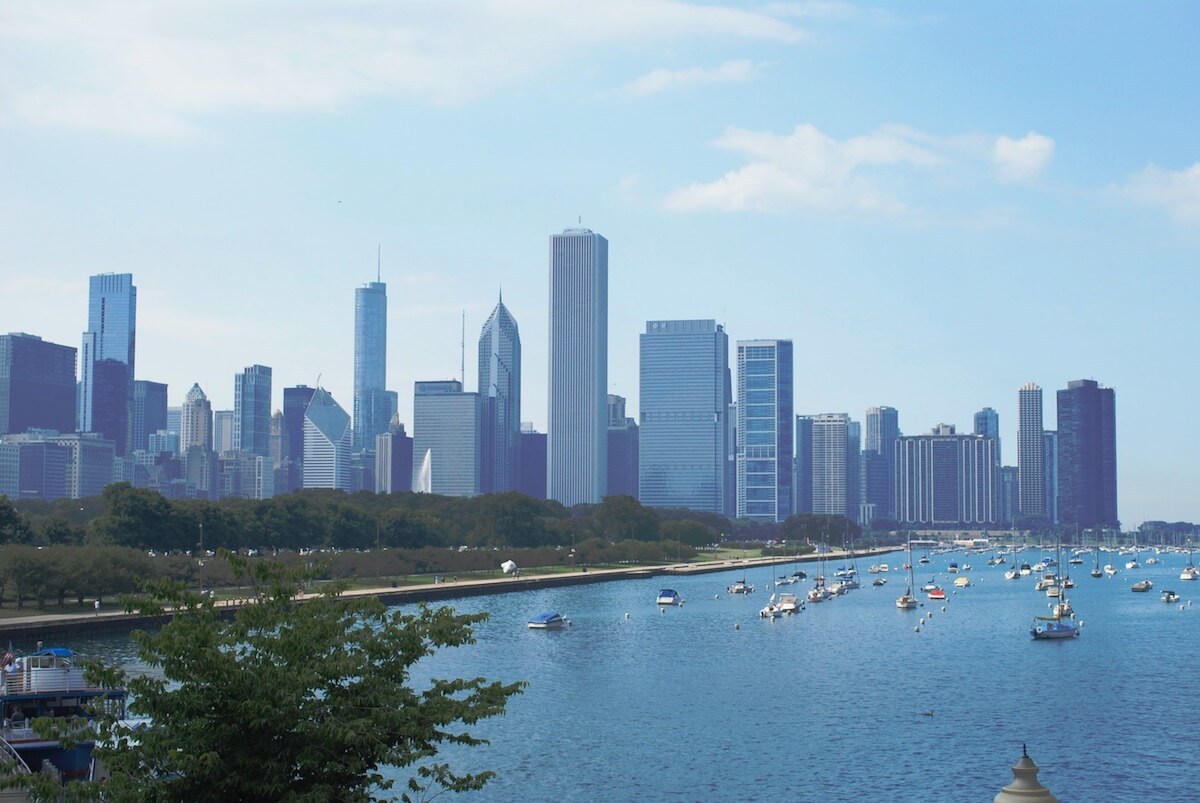

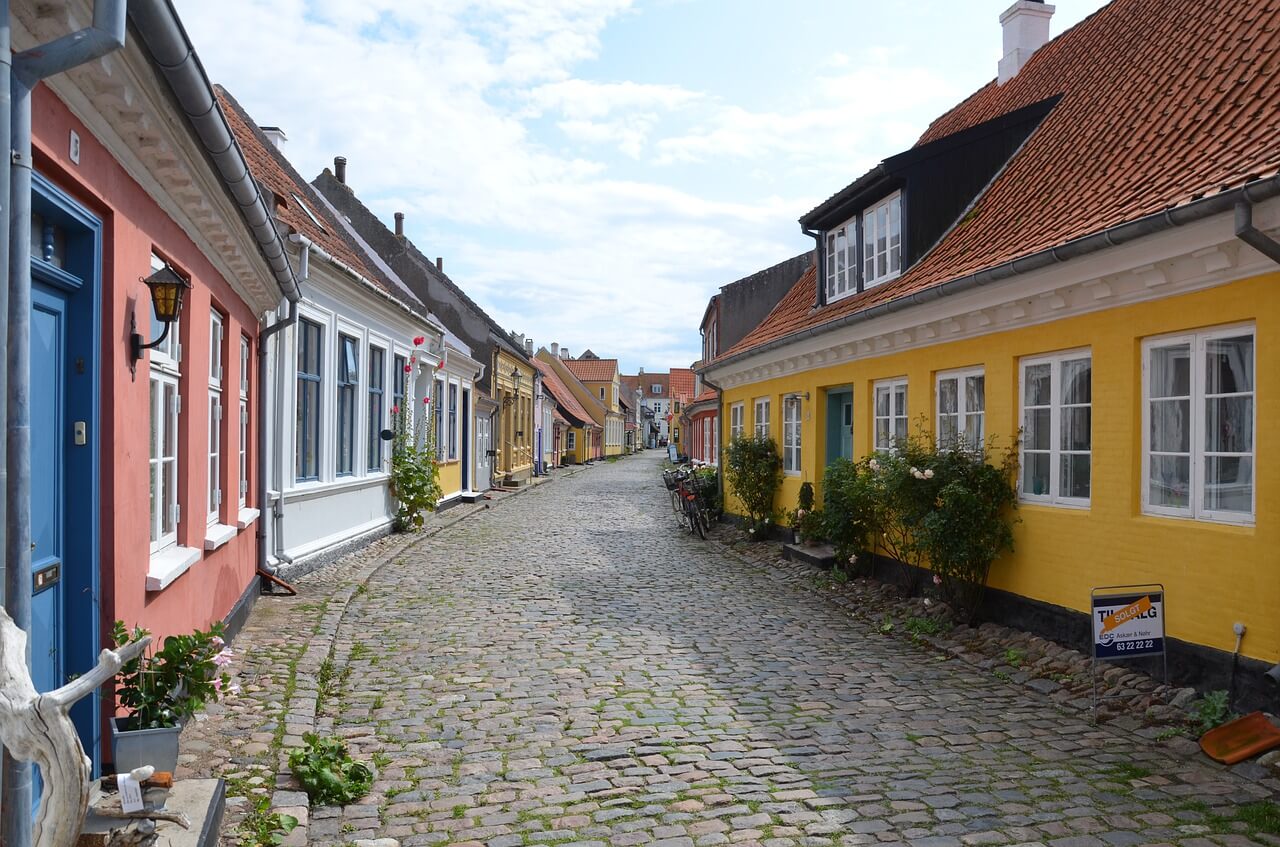

I’d have to agree with Suzanne who wrote a great article on Tbilisi. I’ve lived there quite a bit over the past two years and it was obvious from her writing that she knows the city well. I’ve considered actually moving there myself.
Looks like a genuine list of European cities. Not those fluffy and nonsense listicles created by so called experts who have never lived in any of the cities they talk about. I disagree though about a few locations like: London, Lisbon, Cork, Liverpool, Manchester. Regards